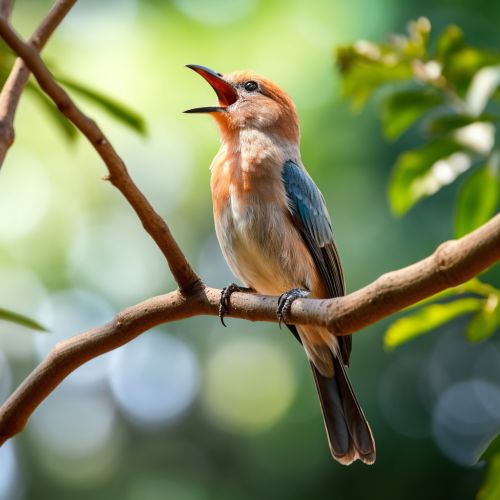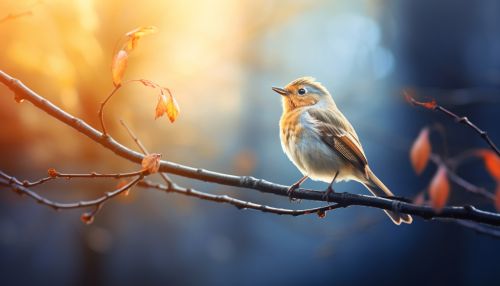Evolution of Birdsong
Introduction
Birdsong, a complex vocalization produced by birds, has evolved over millions of years. It serves various functions, including territorial defense, mate attraction, and communication among flock members. The evolution of birdsong is a fascinating subject, exploring the interplay of genetics, environment, and behavior.
Origins of Birdsong
The origins of birdsong can be traced back to the earliest birds, which likely used simple calls for communication. Over time, these calls evolved into more complex vocalizations for various purposes. The evolution of birdsong is closely tied to the evolution of syryngeal muscles, the specialized vocal organ in birds.
Evolutionary Factors Influencing Birdsong
Several factors have influenced the evolution of birdsong, including sexual selection, geographical isolation, and environmental factors.
Sexual Selection
Sexual selection has played a significant role in the evolution of birdsong. Males often use song to attract females and deter rivals, leading to the evolution of complex and unique songs.
Geographical Isolation
Geographical isolation can lead to the development of distinct songs within bird species. Over time, isolated populations may develop unique songs, leading to speciation.
Environmental Factors
Environmental factors such as habitat type and climate can influence the evolution of birdsong. Birds in different environments may develop different songs to communicate effectively.
Birdsong Complexity and Diversity
Birdsong varies greatly in complexity and diversity among species. Some birds have a simple, repetitive song, while others have a complex repertoire of hundreds of different songs. This diversity reflects the different evolutionary pressures and environmental influences on each species.
Neurobiology of Birdsong
The neurobiology of birdsong is a complex field, studying the brain structures and processes involved in song production and perception. Key areas of the brain involved in birdsong include the HVC and the robust nucleus of the arcopallium (RA), which control song production, and the caudomedial nidopallium (NCM) and caudomedial mesopallium (CM), which are involved in song perception.
Cultural Transmission of Birdsong
Birdsong is often learned through cultural transmission, with young birds learning songs from adult "tutors". This process, known as song learning, is a form of social learning and plays a crucial role in the evolution of birdsong.
Impact of Human Activities on Birdsong
Human activities can impact birdsong in various ways. For example, urban noise pollution can lead to changes in birdsong, with birds in noisy environments often singing at higher frequencies to be heard over the noise.
Future Directions in Birdsong Research
Future research in birdsong will likely continue to explore the genetic, neurological, and environmental factors influencing song evolution. New technologies, such as genomic sequencing and neuroimaging, promise to shed new light on this fascinating field.
See Also


